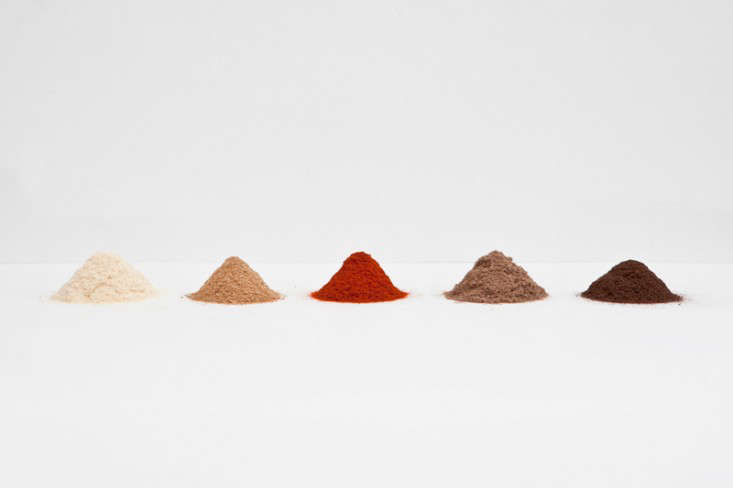Daniera ter Haar and Christoph Brach of Eindhoven-based Raw Color studio have done it again–this time with an unexpected dye source: sawdust.
The “Paper Wood” project is a collaboration between Raw Color studio and paper craftsman Leo Hoegen of the Papierderij, who worked with Haar and Brach to preserve the woods’ individual shades of color. Raw Color then selected five shades of wood (African Padauk and Wenge woods, Black Walnut, Chestnut and Spruce) and reduced them down into sawdust. The sawdust is then mixed with water to create a liquid dye and absorbed into the paper using a natural fixative. As with many of their projects (like their beet and cantalope colored scarves), we’re thinking of trying this as a DIY project. For more information, visit Raw Color.

Above: The initial research phase of the project began with a look at a large sample of hardwoods and their color values.

Above: Pastel woods distilled down into dust particles reveal neutral shades on handmade paper.

Above: Leo Hoegen uses a production technique of last-cutting abstracted leafs on each tree type; shown above are European Spruce and African Padauk.

Above: The five final wood varieties.

Above: Woods shaved into dust, ready to become dye.

Above: The project was presented at Dutch Invertuals “A Matter of Time,” while the pale paper project, called “Paper Shades,” was shown at the duo exhibition at Otrascosas de Villarrosí s in Barcelona, Spain.
See our first post on Raw Color’s studio in Creating the Ultimate Organic Dye. For more on natural dyes, visit our previous posts: Seasonal Vegetable Dyes, and at Easter: DIY All-Natural Easter Egg Dyes and Hibiscus-Dyed Easter Eggs (resulting in a surprisingly gothic color).




Have a Question or Comment About This Post?
Join the conversation (1)